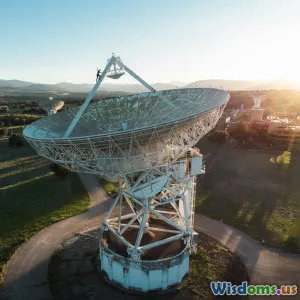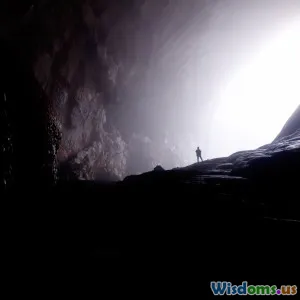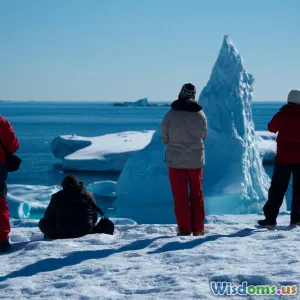
Is Satellite Communication the New Must Have for Safe Exploration?
7 min read Discover how satellite communication enhances safety in exploration, offering real-time connectivity and crucial support in remote, hazardous environments worldwide. (0 Reviews)
Is Satellite Communication the New Must Have for Safe Exploration?
Exploration has always conjured images of intrepid adventurers braving the unknown—deep jungles, vast oceans, desolate deserts, and even the distant reaches of space. Yet, as thrilling as these quests may be, they come with inherent risks, many stemming from the sheer remoteness and isolation involved. How do you stay connected when there’s no cellphone tower in sight? How do explorers send a distress signal if an emergency arises miles from civilization?
Enter satellite communication—a technological marvel that is steadily transforming how we navigate and ensure safety in these remote areas. This article delves deeply into why satellite communication is fast becoming not just a luxury but a vital necessity for modern-day safe exploration.
The Evolution of Exploration Communication
From Messenger Pigeons to Satellite Links
Historically, explorers relied on incremental communication methods that were slow and unreliable. Early expeditions depended on messengers, carrier pigeons, and delayed letters exchanged at proxy points.
The 20th century marked improvements with radios and more recently with mobile phones. But mobile communication is tethered to terrestrial infrastructure, often lacking in wilderness or oceanic expanses.
The advent of satellite communication tech changes this paradigm significantly, offering almost seamless real-time communication over global distances.
Understanding Satellite Communication
How It Works
Satellite communication involves transmitting signals from a ground station to satellites orbiting the Earth, which then relay the signal back to receivers elsewhere. Essentially, this bypasses the need for physical wired infrastructure.
There are two primary types relevant to exploration:
- Geostationary Satellites (GEO): Orbit approximately 35,786 km above Earth, offering stable but delayed communication due to distance.
- Low Earth Orbit Satellites (LEO): Orbit between 500 and 2,000 km, enabling lower latency communications, ideal for real-time voice and data transmission.
Modern Systems and Providers
Companies like Iridium, Globalstar, and more recently Starlink (operated by SpaceX) have expanded coverage with constellations of satellites providing near-global connectivity.
Why Satellite Communication is Crucial for Safe Exploration
Ensuring Constant Connectivity
In regions where terrestrial networks end, satellite phones, messengers, and modems can connect explorers to emergency services and command centers anytime.
- Example: In 2018, a team of mountaineers in the Himalayas used satellite phones to alert and coordinate helicopter rescues after a sudden avalanche blocked usual descent routes.
Enhancing Emergency Response
Satellite communication enables transmitting real-time GPS location, vital biometric data, or environmental hazards directly to rescue teams.
- Recent use in the Australian wilderness fires helped locate lost hikers rapidly, dramatically increasing survival chances.
Supporting Scientific Data Transmission
For researchers in polar regions or deep-ocean exploration, satellite links enable direct streaming of data, vital for timely decision-making.
Real-world Applications
Remote Medical Assistance
The ability to transmit high-definition images and video via satellite enables remote medical consultations, lifesaving in isolated environments.
Environmental Monitoring
Ecologists use satellites to communicate findings in real time about endangered species and ecological changes.
Commercial and Governmental Use
Oil rigs, cargo shipping, and military operations often utilize satellite communication for routine and emergency coordination.
- The US Coast Guard’s Rescue 21 program integrates satellite tech to provide vast maritime communication coverage.
Challenges and Limitations
While essential, satellite communication isn’t without its hurdles:
- Cost: Devices and subscriptions can be pricey for casual explorers.
- Latency and Bandwidth: GEO satellites exhibit delays; bandwidth limitations may affect large data transfer.
- Weather Dependency: Adverse weather can disrupt signals.
Despite these, rapid advances in technology and competition among providers continue to reduce these issues.
The Future: Integrating Satellite Communication into Every Explorer’s Toolkit
Technology giants’ ambitious satellite mega-constellations promise affordable, high-speed, low-latency communications globally.
- SpaceX's Starlink reports capabilities exceeding 150 Mbps with latencies as low as 20-40 milliseconds, nearing terrestrial broadband quality.
Increased miniaturization of satellite communication devices means lighter and more robust gear.
Simultaneously, integration with AI-powered analytics can predict environmental hazards, enhancing on-the-ground decision-making.
Conclusion
In a world that beckons ever more daring and distant adventures, satellite communication emerges not as a luxury but a necessity. It bridges the gap between isolation and connectivity, turning precarious situations into manageable, often survivable ones.
Whether you are a trekker who might be stranded in the wilderness, a scientist conducting polar research, or part of a shipping crew traversing oceanic expanses, satellite communication provides the crucial link that enhances safety, situational awareness, and emergency response.
With technological progress making it increasingly accessible and powerful, satellite communication is almost certainly set to become the universal lifeline and “must-have” tool for all who explore the far reaches of our planet—and beyond.
As we move forward into an era of interconnected exploration, equipping oneself with satellite communication capabilities is more than just preparation; it's peace of mind.
“Connectivity is no longer a convenience—it’s a lifeline for explorers.”
Rate the Post
User Reviews
Popular Posts

















